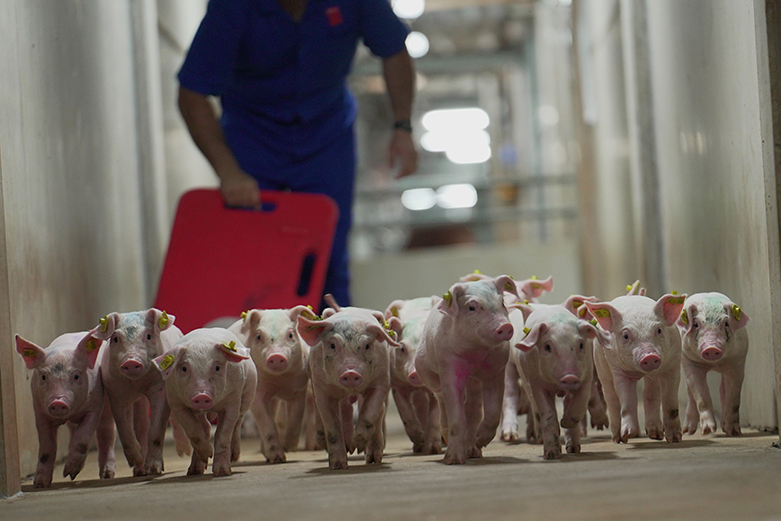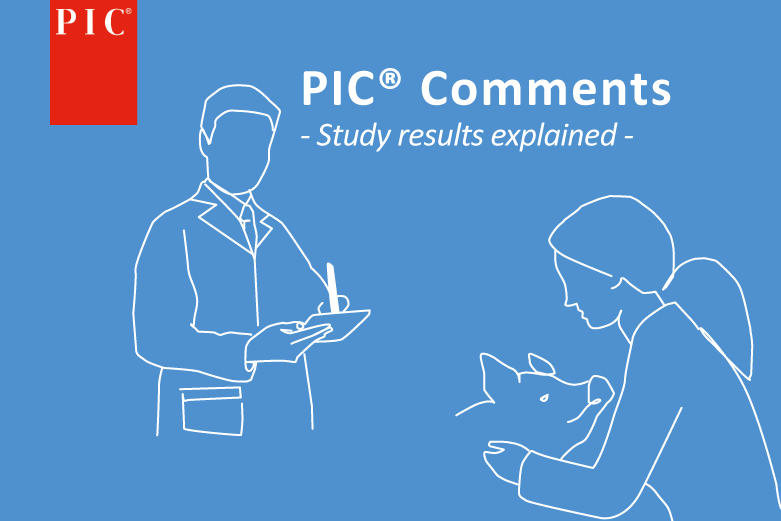First article in a two-part series.
Reviewing the basics and fine-tuning your pig management practices will help you raise the best replacement gilts possible. Unlike slaughter pigs, replacement gilts are the future of your herd. Treat them right to ensure their well-being and allow them to express their full genetic potential.
When you consider the many factors that influence a sow’s lifetime productivity, it’s easy to overlook the importance of developing gilts. However, a proven gilt development program is crucial because it has a direct effect on reproductive performance and the overall success of the sow herd.
Gilts are the future of your herd, from both a genetic and financial standpoint. You’ve invested a lot in these animals, and there are no shortcuts to success. It’s vital to ensure proper nutrition, plenty of water, adequate space requirements, and other basics (including feet and leg soundness) daily for successful gilt development. It’s also important to do the right things from the start, rather than trying to intervene weeks or months later.
The reproductive system of gilts matures between 200 and 225 days of age, and healthy replacement gilts should weigh between 135kgto 160kg when breeding. Therefore, proper gilt development starts by balancing gilts’ growth needs with reproductive needs. PIC recommends a lifetime average rate of gain of 0.68 kg per day, but not less than 0.59 kg per day.
Using the color-coded PIC flank tape takes the guesswork out when determining the weight of gilts: Red = Gilt is too light to breed; Green = Gilt is in the correct weight range and is eligible to breed; and Yellow = Gilt is overweight, above 160 kg.
Successful gilt development is directly influenced by gilts’ surroundings. You can control many of the factors that create a healthy environment for gilts.
Building design
Provide adequate space for gilts as they grow. PIC recommends:
- 7Kg to 27Kg: 0.3m2/gilt
- 28Kg to 50Kg: 0.4m2/gilt
- 51Kg to 85Kg: 0.55m2/gilt
- 86Kg to 110Kg: 0.7m2/gilt
- 110Kg – Service: 1m2/gilt
- Passage width: minimum of 36 inches, so animals can walk through the passage easily
- Gate height: 36 to 40 inches
Proper feed and water are also essential to raise high-quality replacement gilts.
Feeders
- Dry feeders: PIC recommends 1 inch/gilt on Nursery, and 2.0 to 2.1 inches/gilt, or 8 gilts per feeder hole.
- Wet-dry feeders: PIC recommends 1.25 inches/gilt, or 12 gilts per feeder hole. Consider adding a rubber mat at the base of a wet-dry feeder that ends at a slat gap. You don’t want gilts’ toes to slip into the slat, (due to slat wearing out) which can lead to injury.
- Hopper capacity should provide 24 hours of feed intake per pig. PIC recommends 4kg of feed per pig per day. Make sure you plan ahead to avoid out-of-feed events.
- Consider a feeder with solid divisions. This gives pigs adequate space to eat, without being pushed out of the way by other pigs. PIC doesn’t recommend tube/round feeders.
Drinkers
- PIC recommends 10 gilts per drinker. Never have fewer than 2 drinkers per pen in case one is blocked.
- A minimum of 2 drinkers per pen is recommended as a risk management practice to ensure pigs always have water available
- Bowls or nipples are acceptable. Position bowl drinkers beside feeders.
- Water flow
- At least 0.5 litres per minute (for nursery pigs)
- 12 seconds to fill a spray marker lid
- At least 1 litre per minute (in the growing stage
- 6 seconds to fill a spray marker lid
- At least 0.5 litres per minute (for nursery pigs)
- Adjust for proper drinker height.
- Position adjustable nipples 2 to 3 inches above the smallest pig in the pen (shoulder level)
- For bowls, the lip height should be just below the pigs’ shoulder (smallest pig) height (roughly 40% of shoulder level). If a bowl is positioned too low, pigs are more likely to defecate in it.
Climb inside the pens daily and ensure feeders and drinkers are working properly. These daily inspections also help pigs get used to human interaction. This is helpful when you want to use the flank tape, for example. It’s easier to measure pigs that are more accustomed to human contact.
Ensure sound feet and legs
Pens with replacement gilts should be checked daily by climbing inside the pen, rather than the passageway. Ensuring that the pigs are comfortable with human interaction is a critical step in gilt development. This is helpful when utilising the flank tape, for example. It is important that all the gilts stand up to check for lameness or open wounds for immediate treatment. Checking gilts inside the pen also provides an opportunity to check water flow and adequate feed. Going inside the pens also makes it easier to evaluate the pigs’ feet and legs. Pigs need healthy feet and legs so they can stand up to eat and drink and lay back down easily. Check the building flooring daily; make sure there are no sharp edges or any bolts sticking up that can injure pigs’ feet or legs.
Provide proper ventilation
Finally, ensure the building creates a healthy environment for the pigs, in terms of airflow and air temperature.
Minimum ventilation recommendations:
- Nursery: 2.0 cubic feet per minute (CFM)/weaned pig
- 27kg pigs: 3.5 CFM/pig
- Pre-boar exposure: 14 to 15 CFM/gilt
General Ventilation Maintenance
- Dust off fan louvers everyday
- Check fan blades, louvers, blinds, and frames
Provide extra care in a hospital pen
Designate adequate space for extra pig care if replacement gilts get sick or injured. Provide a hospital pen that can accommodate 5% of the barn’s pig population. This is in addition to pens dedicated to the 10-15% of small pigs that have been sorted off. Include extra heat sources and enough feeders and drinkers. Make it easy for pigs to eat, drink and rest so they have the best chance to regain their health.




